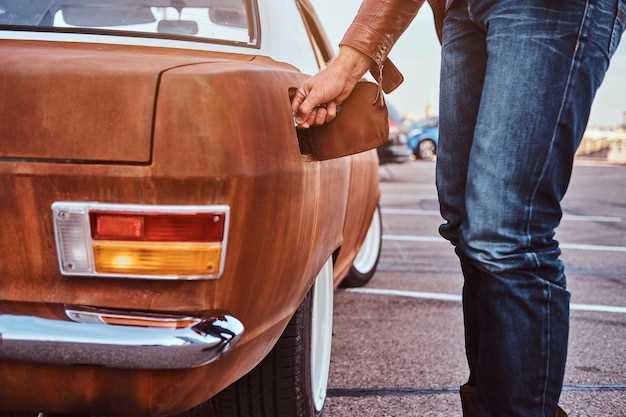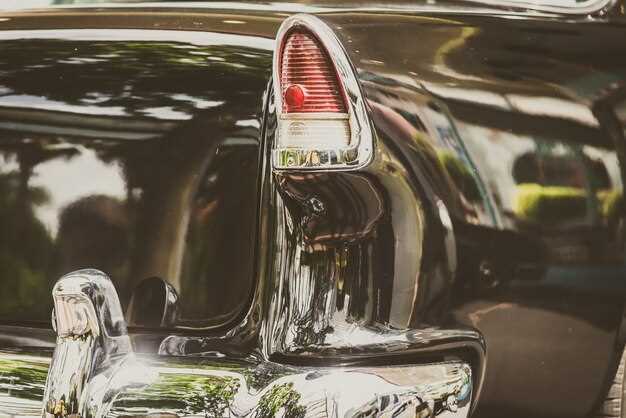
Owning a vintage car is not just a hobby; it’s a commitment to preserving a piece of automotive history. These classic vehicles, with their unique designs and engineering marvels, require special care and attention to ensure they remain in excellent condition. Proper maintenance is essential not only for performance but also for maintaining their value over time.
Understanding the specific needs of vintage cars is crucial for any enthusiast. Unlike modern vehicles, vintage cars often possess mechanical components and materials that are no longer common. Regular maintenance routines must be adapted to accommodate these unique characteristics. This article will explore effective tips specifically tailored for keeping your vintage car running smoothly and looking its best.
From engine care to interior preservation, we will cover essential practices that will help you enjoy your vintage car for many more years. Whether you’re a seasoned collector or a new owner, the insights provided here will enhance your appreciation and the longevity of your cherished automotive treasure.
Regular Inspection of Vintage Car Components

The maintenance of vintage cars requires a dedicated approach, particularly in the regular inspection of vital components. These classic vehicles often possess unique features that demand attention to ensure optimal performance and longevity.
Engine monitoring is critical. Vintage engines may contain components that are no longer readily available, making regular checks essential. Look for signs of wear, such as oil leaks or unusual noises. Change the oil frequently to maintain lubrication and protect internal parts.
The electrical system warrants close scrutiny as well. Inspect the battery for corrosion and test its charge regularly. Vintage cars might have outdated wiring that can lead to short circuits; replacing any frayed wires can enhance safety and reliability.
Brakes are another area that requires detailed inspection. Check brake pads, discs, and fluid levels. Vintage brake systems might utilize different materials than modern ones, so ensure they meet current safety standards to avoid failures.
Tires should not be overlooked, as they significantly affect handling and safety. Examine tread depth and sidewall conditions. Vintage tires often degrade even if they appear undamaged; regular rotation can help maintain even wear.
Finally, the chassis and suspension components should be assessed for rust or damage. A strong chassis is essential for structural integrity, and worn suspension parts can impact ride quality and overall safety.
In conclusion, the key to effective maintenance of vintage cars lies in the thorough and regular inspection of their components. By addressing potential issues proactively, owners can preserve their vehicles’ performance and charm for years to come.
Choosing the Right Products for Vintage Car Care
Selecting appropriate products for vintage car maintenance is essential to preserve the vehicle’s originality and performance. When considering care products, always prioritize those specifically designed for classic cars, as they contain formulas tailored to vintage materials and finishes.
When choosing cleaning agents, avoid harsh chemicals that can damage paint or upholstery. Opt for pH-neutral cleaners that are safe for both surfaces and the environment. For polishing, select waxes or sealants that offer UV protection, preventing fading and oxidation while enhancing the shine of the paintwork.
For engine maintenance, use lubricants and fluids that are compatible with older engine types. Synthetic oils can often provide superior protection, but it’s crucial to check compatibility with your specific model. Regular oil changes with the right viscosity will help maintain engine performance and longevity.
Additionally, when selecting products for interior care, look for conditioners formulated for vintage leather or fabric. These products can help maintain suppleness and avoid cracking, ensuring the interior remains luxurious and comfortable.
Finally, invest in high-quality tools and supplies such as microfiber cloths, soft brushes, and maintenance kits designed specifically for vintage vehicles. This will ensure that your care routine is effective and safe for the unique materials that vintage cars are made of.
Storage Techniques for Longevity of Vintage Vehicles

Proper storage is crucial for maintaining the condition and longevity of vintage cars. First and foremost, selecting the right environment is essential. A climate-controlled garage protects these vehicles from extreme temperatures and humidity, which can cause rust and damage to various components.
Before storing a vintage car, perform thorough cleaning and detailing. Remove any dirt, grime, and contaminants from the exterior and undercarriage to prevent corrosion. Waxing the body helps create a protective barrier against moisture and environmental pollutants.
After cleaning, drain all fluids, including fuel and oil, as stagnant liquids can lead to engine damage and fuel system issues over time. Replace these fluids with fresh ones once you’re ready to use the car again. Additionally, consider adding a fuel stabilizer to prevent degradation if the car will be stored for an extended period.
Elevating the vehicle on jack stands can alleviate pressure on tires, preventing flat spots from developing. Cover the vintage car with a breathable, soft material to protect it from dust and potential scratches while allowing moisture to escape.
Consider disconnecting the battery to prevent drainage. Placing moisture-absorbing desiccants in the vehicle can help keep the interior dry and free from mildew. Regularly check on the car and its surroundings to ensure that the storage conditions remain optimal for preserving its integrity.
By implementing these storage techniques, vintage car enthusiasts can significantly extend the lifespan and maintain the value of their cherished vehicles.
